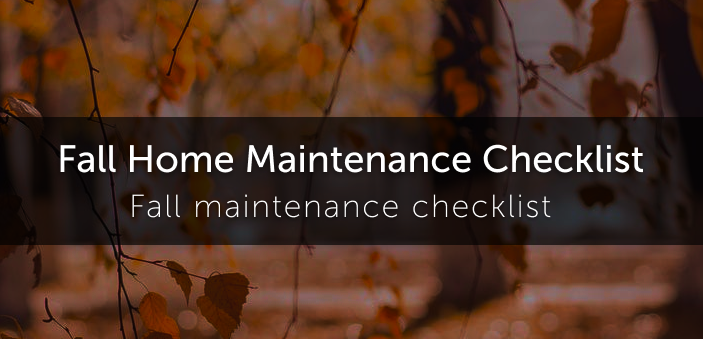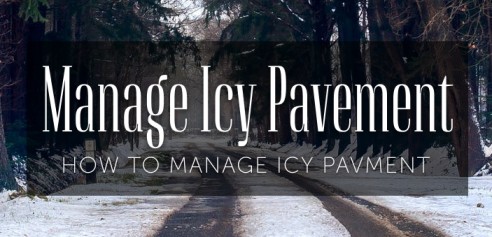Fall Home Maintenance Checklist

The cold morning air fills your lungs as you grip a mug of hot coffee. The blood-orange leaves in your yard whistle around delicately in the breeze. You begin planning your day in your head. A football game with the relatives in the afternoon, a nice meal with your family afterwards, and then a night of relaxing by a warm fire. Not a bad day.
Before heading back inside, you check your outdoor faucet.
Wait a minute… it’s frozen solid. Your heart begins racing as you hurry to the backyard to check on your wife’s basil plant. Frosted up and completely dead. You walk inside with your head hanging and try to turn up the heat. Your thermostat’s displaying an error message.
You fall to your knees and scream to the sky, “Why didn’t I just read Filter King’s Fall Home Maintenance Checklist!?”
Why is fall maintenance necessary?
Your house is pretty great. It has all the things and people you love, it looks great, and it’s a source of pride for you. And if the weather stayed the same all year, it would stay that way!
Unfortunately, the weather does not stay the same. Not even close. As we round the corner into fall, you can expect temperatures to drop precipitously, just like it does every year. If you live in the northern states, you’ve got it the worst. You’ll have to pay special attention to your home maintenance over the next couple of months, since your winters are VERY cold.
Southern and coastal states have less temperature fluctuation through the year, but that just means a freeze will happen when you least expect it. When the temperature plummets, your house and the surrounding foliage needs to be maintained in a way that accommodates it. Your house is a massive, interconnected network of systems that all serve to keep you comfortable in a world that often isn’t.
This checklist serves to be a referential guide for everyone, regardless of area, so take a look and see what you need to do.
Fall Plant Care

Plants are especially susceptible to drops in temperature. Plants can freeze over, dry out, or be starved of sunlight. Here’s a quick guide for fall plant care for the most common outdoor plants.
1.) Fall Lawn Care
Your lawn is most likely comprised of grass and some shrubbery or trees. Let’s talk about the grass first.
Different parts of the country experience different falls. If you’re in the south, you can expect a cool off and a lot of dryness. If you’re in the northeast, it’ll be cold, wet weather. The way you treat your lawn depends on these changes.
As long as temperatures stay above freezing, your grass will continue to grow like normal. If the weather in your area is cool and moist, it can even begin to grow faster. Keep to your mowing schedule, and adjust your watering schedule in case you start getting a lot of cold rain.
Your lawn, pretty much regardless of your geographical area, will get dead leaves in it during the fall. Yes, they look great and it fits the fall aesthetic, but they can lead to problems. Dead leaves can pile up block out sunlight, starving your grass. Even if you only get a few leaves, the moist, cool weather can facilitate the growth of lawn fungus. Get rid of those leaves to ensure your lawn stays lush and green all season long.
As for your shrubs, make sure you cover them with rags if you’re expecting a frost. Water them as normal until your regular frost season. If you have potted plants outside, bring them in once the local weatherman mentions 55-degree lows in between his monotonous droning.
If you’ve been wanting to plant perennials, early fall is the time to do that! The cooler, more moist weather is easier on them at the start of their lives, and they’ll be able to take hold before the winter frosts.
2.) Fall Tree Care

The term “tree” is extremely vague. Let’s break them down into categories that are important for weather change maintenance – evergreen, and non-evergreen.
For evergreens (Douglas firs, blue spruces, anything that looks like a Christmas tree), fall care is pretty limited. These trees have evolved to grow in the coldest climates, so they’ll be fine. All you can do is facilitate this growth. Keep their soil moist as much as possible, prevent fungal growth by removing dead matter around them, and just keep an eye on them!
For non-evergreens, the maintenance is more involved. You’ll want to prune them back to help them conserve water and prevent injury during strong winds.
Put mulch over the root area to retain moisture and heat. We recommend using a darker mulch. Darker mulch absorbs more sunlight during the day, and releases it more evenly at night. The science: the color black is actually just the absence of reflected light, so a black mulch absorbs more of the light that hits it. This light warms up the mulch, which then dispenses into the soil it overnight. A warmer soil is less likely to frost, and trends to retain moisture better than cold soil. This can be the difference between a healthy plant when spring comes, and a dead one.
Again, if you’re looking to plant new trees, early fall is the time to do it!
Fall Home Care
1.) Manage Icy Pavement

If you’re in a cold area, you can expect an icy day even in the fall. This becomes especially problematic if you have a paved driveway or walkways around your property. If this pavement gets icy, it can get slick. If it gets slick, people can fall. If people fall, they can get hurt.
Keep everyone safe by getting some pavement salt at your local hardware store. Bear in mind that this is not the same as regular table salt. Pavement salt consists of water molecules in a conjunctive mixture with sodium and chlorine ions. Your steak is seasoned with inert NaCl (sodium chloride) molecules.

The normal freezing point of water is 32 degrees Fahrenheit, which means that any ambient temperature below that will freeze ground water and create slippery conditions.
Salting the ice creates a chemical reaction between the frozen water and the sodium and chlorine ions. The resulting solution has a freezing point of just 15 degrees Fahrenheit. If the temperature is anywhere above that, the ice will melt very quickly.
With home-based businesses becoming increasingly popular, it’s important to consider the presence of unfamiliar guests or clients at your house. Since this makes your house a place of business, you have to protect it like one. Get some slip warning signs to ensure your guests know to be careful on your driveway or paths. This helps prevent them from injury (the top priority), with the added benefit of dissuading expensive lawsuits.
2.) Fall Home Insulation
If you’re in a northern area, even fall weather can be intolerably cold. Insulating your house is the key to keeping the cold out. A lot of houses in the northern areas of the U.S. use window air conditioning units during the summer. Since it doesn’t get too hot, there’s no need for a more powerful central unit.
The problem is that, by their very design, window AC units make a hole in your house. Air has to get in, after all. When the weather starts to turn, pull these units out, clean the filters, and store them until next summer. Close those windows, and then crank up your furnace.
With foliage drying out and weather getting worse, many small animals will seek refuge in your house during the fall. Remind them of your property rights by checking your house for, and subsequently sealing, any tiny gaps. If a window doesn’t close property, if your basement has some gaps in the seam, or if your doors are getting old, you can be certain that little critters will squeeze in. Those small holes also let the warmth out, so insulating them will lower your energy bill.
3.) Prevent Structural Damage from Water and Fire

Water and fire don’t mix well with brick and wood. We should put some effort into keeping them separate.
Remove, drain, and then store your outdoor hoses. If there’s an ice storm in the forecast, turn your exterior faucets to a slow drip. Moving water is a lot harder to freeze than stagnant water. When water freezes, it expands. When that expansion happens in a pipe (especially an old one), it can burst or crack. When the ice melts and the water starts flowing again, you get some pretty serious flooding.
Also, clean your gutters. A gutter full of leaves doesn’t divert rainwater. That means it will collect on your roof, adding structural strain and a risk of water damage.
Have your dryer vent cleaned. Colder, dry weather increases static electricity in your dryer system, and tends to make some things more flammable, including dryer lint.
Before kicking on your furnace, check the surrounding area for anything that can catch fire. Space heaters should be kept away from curtains and plants. Your central heating system should be checked for wiring issues (especially in your attic, where there may be flammable insulation or dead leaves nearby.
You should also check your air filters every month, and replace them often, to keep your heater and AC systems at peak condition. Dirty filters can lead to bad smells and reduced power. A completely blocked filter can break your system entirely, so it’s very important to check them and order replacement air filters when necessary.
Quick Reference Fall Maintenance Checklist
- Rake lawn
- Water grass and plants as normal until frost occurs
- Prune back non-evergreens
- Put mulch around all trees
- Keep dead matter away from roots and trunks
- Plant new trees and perennials, if applicable
- Salt pavement
- Remove window AC units
- Fix insulation issues
- Get slip warning signs, if applicable
- Clean gutters
- Keep faucets dripping during frosts
- Remove, drain, and store hoses when not in use
- Check furnace and HVAC system for flame hazards
- Have dryer vent cleaned
- Check and order air filters

